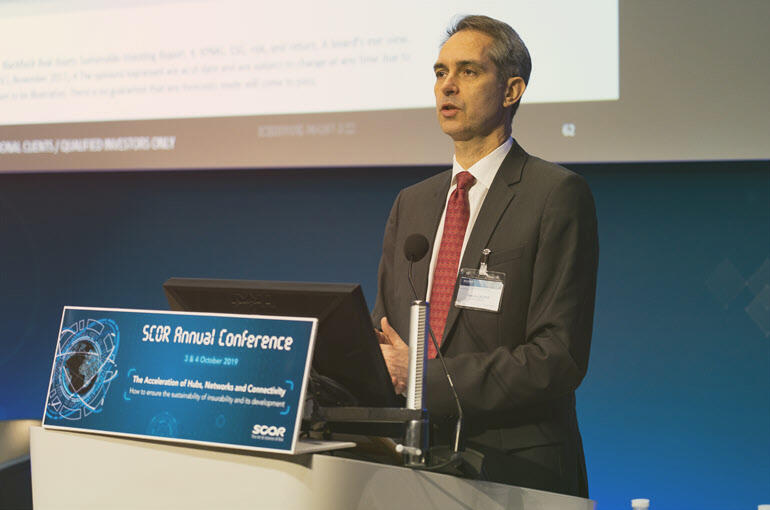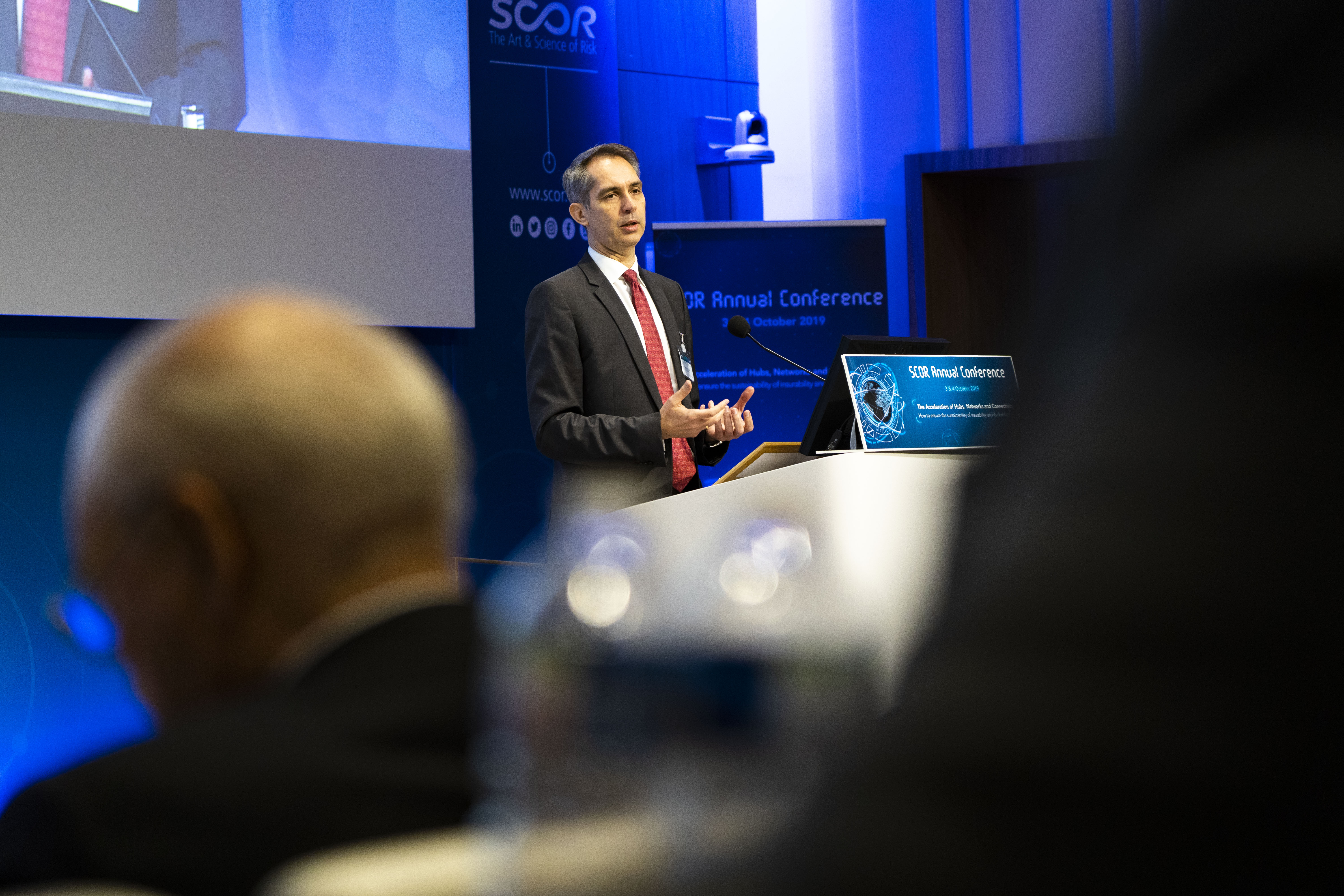- FR
- EN
Infrastructure funds: A sustainable approach
In his presentation at the 2019 SCOR Annual Conference, Patrick Liedtke, Managing Director of BlackRock, examined the challenges of sustainable infrastructure investment in a world of growing unpredictability.

By Patrick Liedtke
How do you ensure sustainability over longer periods of time? This is a big question when we’re talking about infrastructure.
Expecting the unexpected
Some events, for example, have cataclysmic effects that we don’t foresee. With 9/11, no one really expected that a manmade event of that size would affect the passive side of insurance companies’ balance sheet, while at the same time shrinking the values of assets almost across the board.
Insurers underwrite risk – we know this. But between the time when someone pays up front and when you eventually need to pay the money back, you need to invest it. Normally we look at these as two unlinked processes, aside from trying to match duration over time with the payout process. Risk assessment that affects both sides of the balance sheet is fairly new.
As insurers, we owe it to our clients to make good on our promises. I look at infrastructure and sustainability through the asset lens and what it means to invest. I have learned, working with investors, that they like, of course, to be compensated for the risk they take – they just don’t like taking it. This is a bit of a conundrum.
Patrick Liedtke, Managing Director of BlackRock
The drivers of sustainable investing
Why is this particularly important to insurers? Regulatory, sustainability and reputational drivers are changing the motivations around sustainable investing, with repercussions far into the future. This is important because we need to ensure sustainability at any point in time, even when the goal posts are moving.
Depending on where and when you are investing, for example, a change in the regulatory and governance context can happen quite suddenly. We need to be ready for this.
At the same time, new generations have new values and views. These values and views shape and drive the regulatory and governance universe.
Then there are things that we know are going to happen, but we don’t know what their impact will be. For example, we have a good idea of how many people will be living anywhere, at any point in time – we just don’t know what they will do, or even where they will migrate. We know about resource efficiencies and climate change, but we don’t know how they will play out. We need to think about things like mobility in a decarbonizing economy.
Environmental, social and governance (ESG) considerations are very much at the core of sustainable investing. At BlackRock we have surveyed the world’s major insurers and verified that the vast majority now incorporate ESG considerations into their asset allocation calculations. The whole concept of investing with a focus on resilience and sustainability is growing on steroids.
Of course, investors still have concerns over potential trade-offs, as well as challenges around implementation. As they restrict their investing universe in line with reputational issues, for example, what’s left seems not to be very diverse or very productive. When we did our last survey, 77% of the respondents indicated that they believed they were compromising either diversification or income outcomes when they considered ESG investments.
Ensuring sustainability over the longer term
The question is, what do you do to create resilience – particularly with infrastructure, which has such a long-term horizon?
You need market resilience. Real asset investors are looking for stable returns and cashflows that are not procyclical and as such, act as natural diversifiers to their liquid portfolios and provide long-term portfolio ballast.
Then there is sustainability. Real assets need to survive and thrive in the face of social and environmental shocks and stressors, including – but not limited to – climate change.
And finally, real assets are subject to a host of idiosyncratic risks, including counterparty, regulatory and geopolitical risks. These issues need to be robustly addressed for all investments.
To do this, we need to think differently. We need to ask ourselves: Can I protect my asset by actually driving resilience to make the outcome more sustainable? That’s what’s happening now. Investors are waking up and taking an active role during project design to make the asset more stable over time – for instance, a sturdier toll road that does not collapse when there is an earthquake.
You need to keep on top of many factors if you want to get the equation right. At BlackRock, we are tracking hundreds of ESG variables and have created knowledge around them. We consider a multiplicity of decision factors when we make our underwriting decisions, not only reputational issues. This gives a totally different quality to our decision-making process.
A framework for decision making that tells the story
Our experience is, however, that if you give people too much data and too many variables they disconnect. To help people understand the impact of their decisions we try to distill things down into a metric that everyone can understand – to create a common denominator. This is what we do when we “dollarize” – we create help people to make decisions based on the relative value of the investment.
We also know that we need to “sell” the choices we support. We have a fund called the Global Renewable Power Fund – about US$2 billion dedicated to helping the world with the energy transition. To explain the impact of investing in this fund, we make a story out of it that everyone can relate to, using the Sustainable Development Goals as a framework. The slide below shows how this works.
One of the most challenging areas is climate risk. There is a lot of social pressure on companies to invest in decarbonizing. We know there is climate change, but the complexity of everything that is linked to it – from the physical risks like earthquakes, floods and hurricanes; to the impact on technology development; to the regulatory and political angles – makes these investments particularly challenging.
In short, things are changing. These changes are providing more opportunities and markets are growing dynamically around the world. But a lot of the opportunities lie in countries that are outside the traditional investment realm. We need to understand and work with this.
We are at a vital intersection, between what the insurance industry knows how to do – intelligent risk-taking over a long timeframe – and things we are trying to create. Sustainable infrastructure investing is one of these things.

